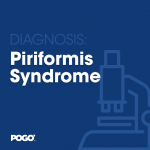Diagnosis: Rheumatoid Arthritis (RA)
What is RA?
Rheumatoid Arthritis (RA) is an autoimmune disease causing swelling, pain and stiffness in the joints and has no known cure.
Symptoms of RA
Those with RA may experience one or more of the following signs:
- Joint pain (especially in the feet, hands and knees)
- Swollen joints
- Fever
- Limping
- Joint stiffness – especially in the morning
- Sleep disturbance – due to pain
- Persistent fatigue (tiredness)
- In some cases, RA in the neck can cause headaches and tingling in the fingers
How is RA diagnosed?
Physiotherapists are able to identify RA based on a person’s signs and symptoms as well as looking at the joint. However, if there is suspicion of RA normally the person is referred to a rheumatologist who will conduct a number of tests to confirm the diagnosis.
No single test can confirm RA. In order to make a proper diagnosis, the rheumatologist will:
- Ask questions about personal and family medical history, as well as recent and current symptoms
- Examine each joint, looking for tenderness, swelling, warmth and painful or limited movement. It isnot uncommon for RA to present on the same joint in both limbs
- Conduct blood tests to look for blood proteins linked to RA
- Conduct scans to look for joint damage, such as erosions, loss of bone in the joint and narrowing of the joint

http://www.aihw.gov.au/rheumatoid-‐arthritis/about/
What Causes RA?
The cause of RA is not fully understood. However, it is known to be an autoimmune disease. Normally, the role of the body’s immune system is to defend the body from infections.
However, in RA and other autoimmune diseases the immune system starts to attack healthy tissues like the ones found in the lining of the joints, called the synovial membrane. The role of the synovial membrane is to protect the joints while moving. So, in RA the attack on the synovial membrane causes it to become thickened and inflamed. Because of this inflammation there is breakdown of the cartilage surrounding the joints causing damage to the bones.
How is RA treated?
There is no known cure for RA. However, rheumatologists may prescribe medications to: reduce joint inflammation and pain, improve joint function and prevent destruction and deformity of the joint. In conjunction to this physiotherapists will help to manage pain and disability through individualized programs that address: flexibility, endurance, strength, bone health, balance and risk of falls. This is done though exercise therapy (usually swimming is the best for RA), advice on joint protection and some splinting.
Shanam Nisha
Student Physiotherapist
References
- http://www.arthritis.org
- medicinenet.com/rheumatoid_arthritis
- https://www.betterhealth.vic.gov.au/health/conditionsandtreatments/rheumatoid-‐arthritis








